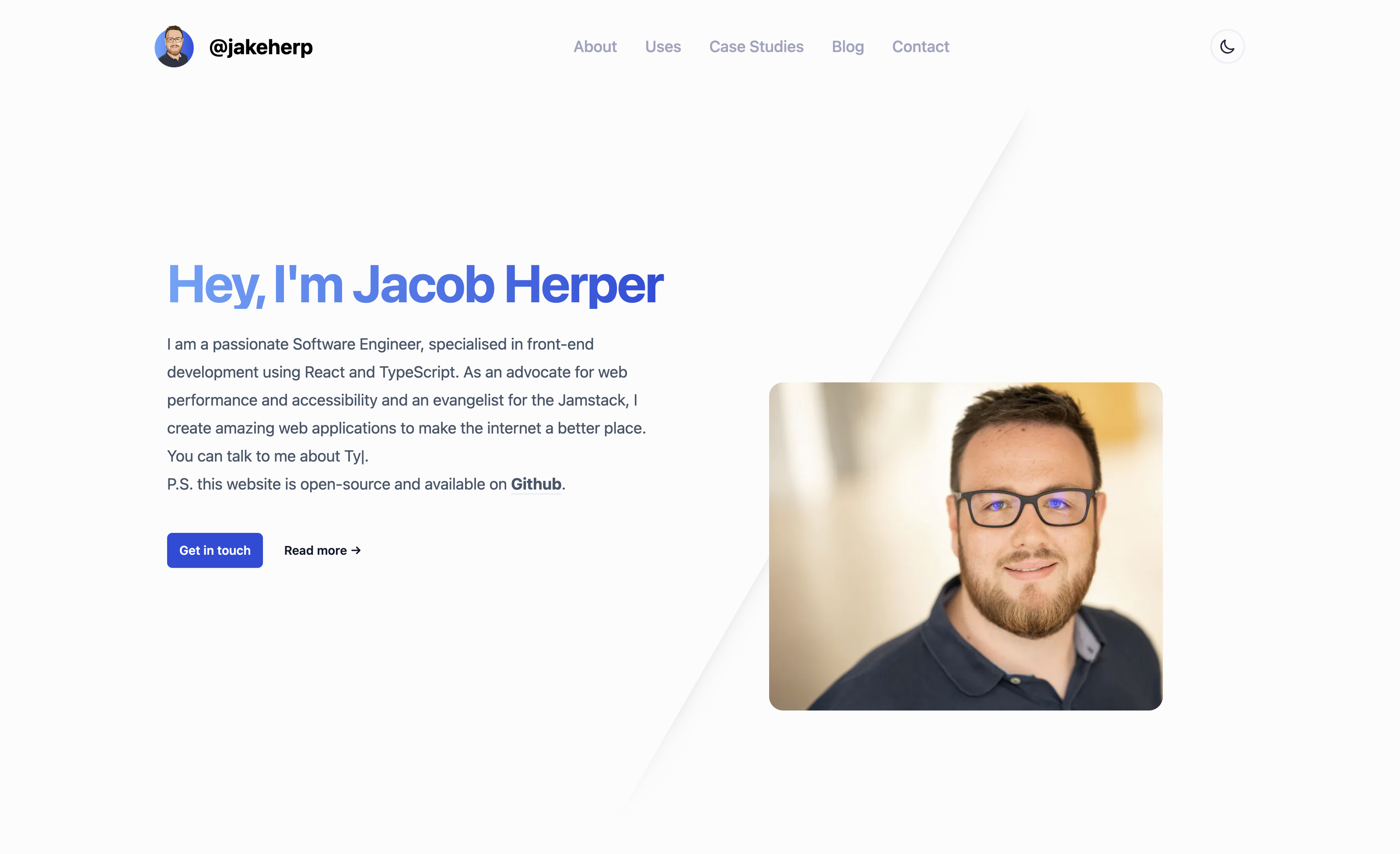This is my portfolio website, proudly built with Next.js, TypeScript and Tailwind. The content is managed through Sanity. It uses the pnpm package manager by default, but can be used with npm or yarn as well.
Previously I built my website using Gatsby, but decided to move to Next.js due to their major improvements that make it my first choice, not only for applications, but also for websites now.
This project is a constant work in progress, so if you find any bugs, typos or other errors, please feel free to open an issue or pull request. This project is open source, so please feel free to fork and adapt for your own projects (credit would be appreciated).
-
Fork or Clone
Fork or clone this project from Github to get your own copy of it.
-
Installation
This project uses the pnpm package manager. To get started, follow the Getting Started Guide
Once this is installed you can run
pnpm installin your project directory to install dependencies.cd portfolio/ pnpm dev -
Start developing.
Navigate into your new site’s directory and start it up.
pnpm dev
-
Open the source code and start editing!
Your site is now running at
http://localhost:3000!Open the
portfoliodirectory in your code editor of choice and editsrc/app/(user)/page.tsx. Save your changes and the browser will update in real time!
To learn more about Next.js, take a look at the following resources:
- Next.js Documentation - learn about Next.js features and API.
- Learn Next.js - an interactive Next.js tutorial.
You can check out the Next.js GitHub repository - your feedback and contributions are welcome!
Sanity Studio comes preinstalled under /src/app/(admin), so you do not have to run a separate app in order to update your content.
Sanity is very easy to get started with either by signing up through their website or by using the command line:
npm create sanity@latestAt the end of this process you will get a Project ID. Add this to your .env.local as NEXT_PUBLIC_SANITY_PROJECT_ID file to get started (rename the .env.example file to get started more easily. There the NEXT_PUBLIC_SANITY_DATASET and NEXT_PUBLIC_SANITY_API_VERSION are prefilled with the defaults).
All the schemas for the content types I have implemented are included under /src/schemas and GROQ queries are under /src/queries. If you prefer GraphQL, Sanity does support this as well. Have a look at the documentation.
Mostly for server-side error tracking, this project uses Sentry. They offer a free tier as well. To get started click here and sign up for their service.
Once you have set up your project, you need to get the DSN URL displayed in the Sentry project settings under SDK Setup → Client Keys (DSN).
For my recruiter sign up form I use Mailchimp to manage this mailing list. Sign up and create an audience. Add this audience ID in your .env.local as NEXT_PUBLIC_MAILCHIMP_AUDIENCE_ID.
I use SendGrid and Nodemailer to implement the contact form. Sign up to SendGrid for free to obtain an API Key and add this to your .env.local as SENDGRID_API_KEY to make the contact for work.
Please update the email address in /src/pages/api/contact/send.ts to ensure I do not receive all your contact form submissions 😂
Vercel Analytics is installed under /src/app/(user)/layout.tsx. If you do not want to use Vercel Analytics or don't intent to host your website on Vercel, you can remove this.
There is also a vercel.json file in the root of the project. This is fairly specific to my website, so you should likely remove this or clear the redirects that are irrelevant to your setup.

